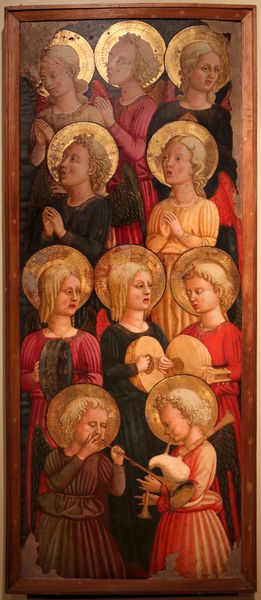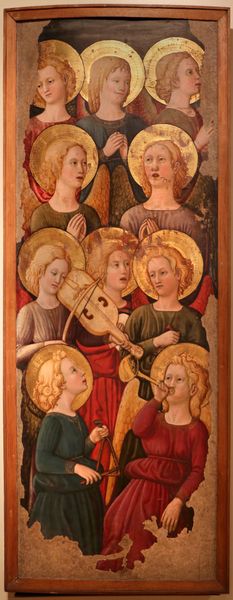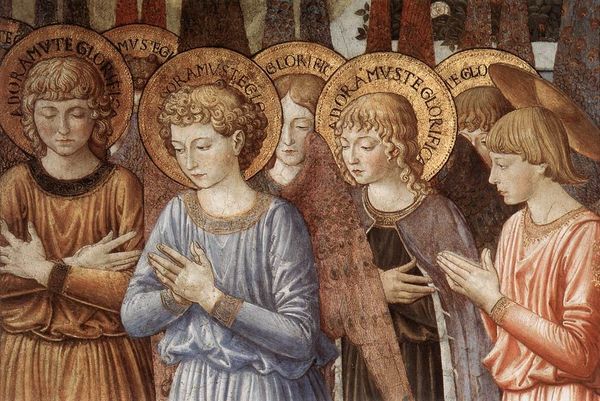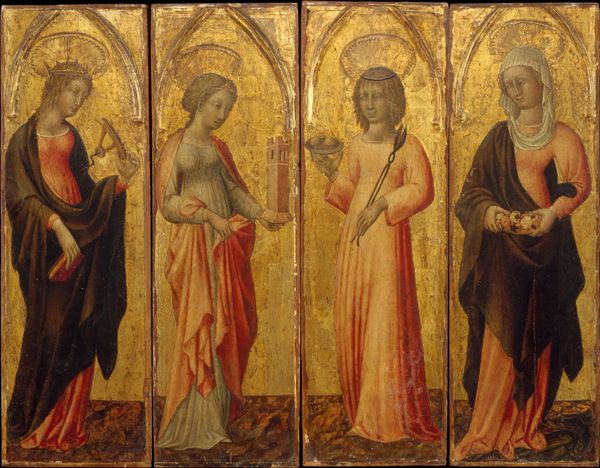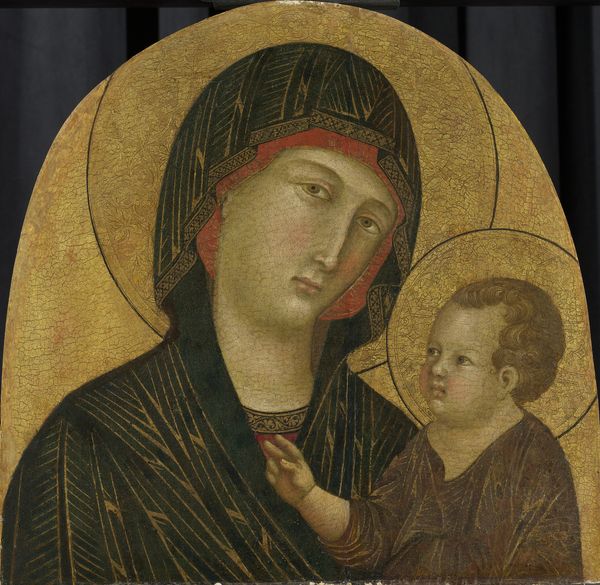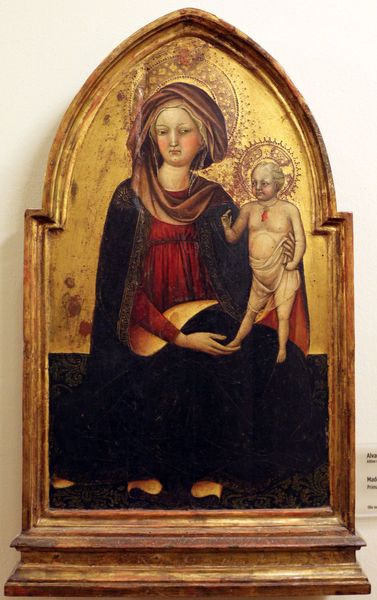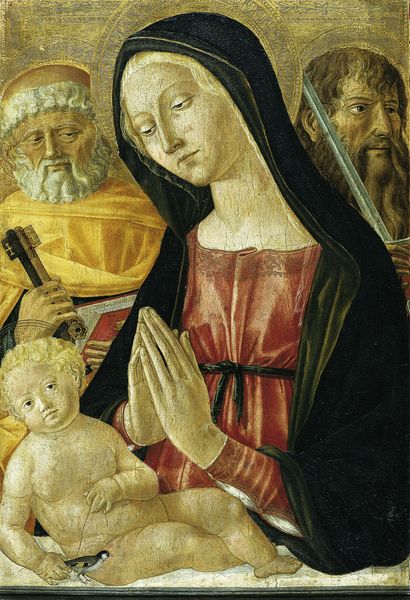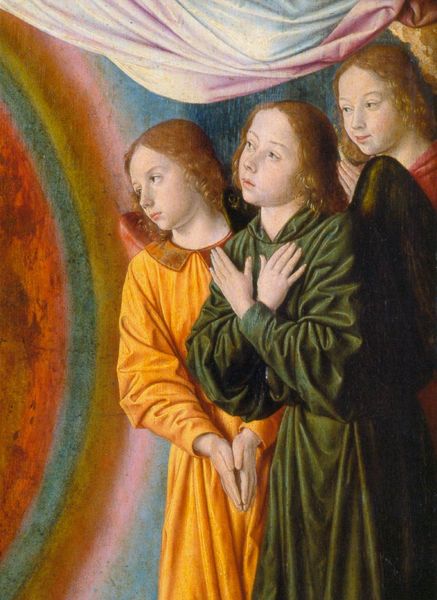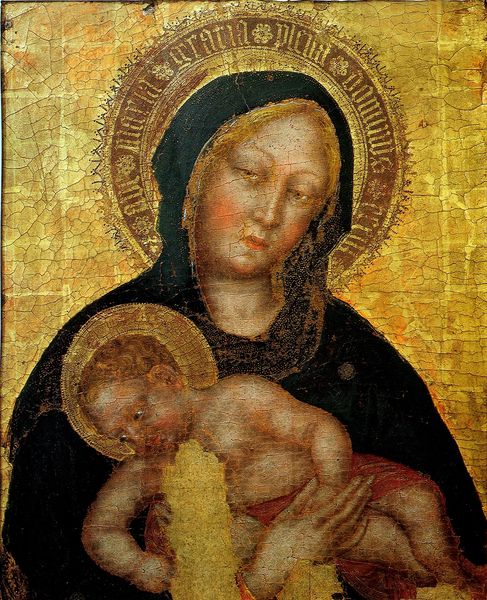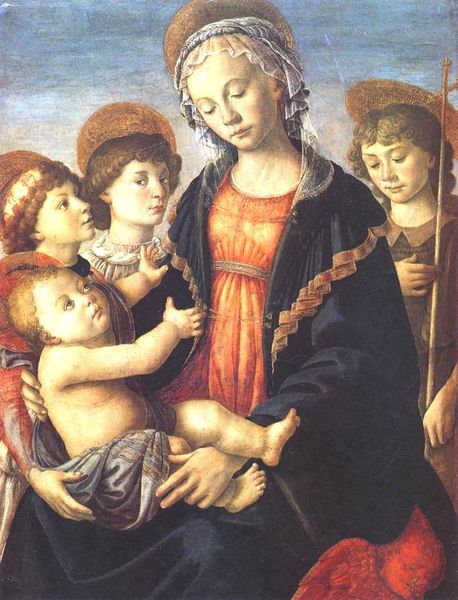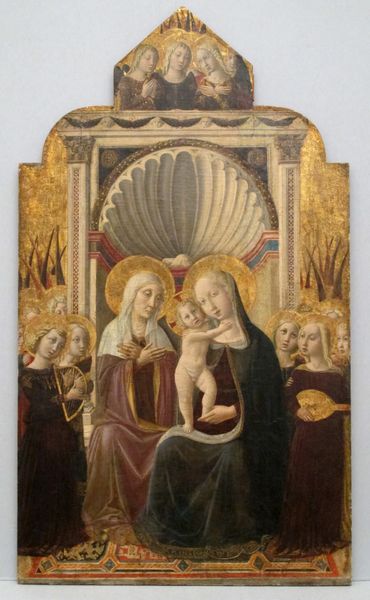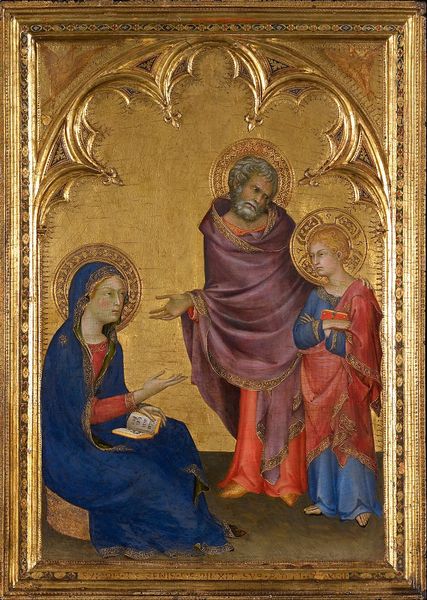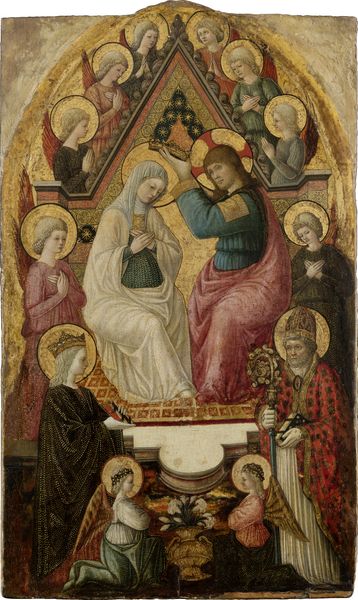
tempera, painting
#
portrait
#
allegory
#
tempera
#
painting
#
oil painting
#
group-portraits
#
italian-renaissance
#
portrait art
Copyright: Public domain
Curator: What a compelling piece. We're looking at "Cori di angeli musicanti," or "Choirs of Music-Making Angels," created around 1450 by Lo Scheggia. The medium is tempera on panel. Editor: Immediately, I'm struck by the intensity of the color and light. There’s such a radiant, almost tactile quality to the gilding and the fabric. It makes the sacred feel immediate and human, in a way. Curator: Absolutely. Examining the tempera reveals so much about workshop practices during the Early Renaissance. Note the labor intensive layering process – each color carefully applied, the gold leaf meticulously laid down. This piece likely reflects a collaborative workshop environment where specialized artisans contributed distinct skills, revealing the integration of artistic practice into Florence's vibrant material culture and market economy. Editor: The faces of the angels also stand out; their expressions have an otherworldly quality but rendered in very realistic style. You have to wonder how the image was received in the context of Florentine devotional practices. Were viewers meant to focus on the beauty of the music, the implied heavenly harmonies, or was there perhaps a political element in depicting ideal citizenry in harmony? Curator: Good point. The prominent use of tempera offers a critical counterpoint to oil paintings which, although also present during this period, had distinctly different values attributed to it with respect to its production process. Scheggia, in effect, demonstrates that Florentine artists were keen on promoting unique material engagements that defined their craft’s visual value, and its commercial impact within the art marketplace of Renaissance Florence. Editor: Considering the broader political context, Florence at the time was consolidating power, building its artistic reputation. Works like this, prominently displayed, were active participants in defining the city's image, weren’t they? Religious themes were as much about civic pride as they were about devotion. Curator: Precisely. So, thinking about its patronage, we can also look into how devotional painting’s role contributed to shaping Florentine identity during this period. Understanding material decisions help decode an intersectional analysis involving civic identity, artistic skill, devotional sentiment. Editor: It's fascinating how, through process, the artist created a sacred aura, that reflects back on civic identity and, possibly, shaped it, too. I leave this listening experience richer than before. Curator: Indeed, Lo Scheggia used modest materials like tempera to project grand messages through this choral performance. It brings a material voice to its political vision that will stay with me too.
Comments
No comments
Be the first to comment and join the conversation on the ultimate creative platform.
